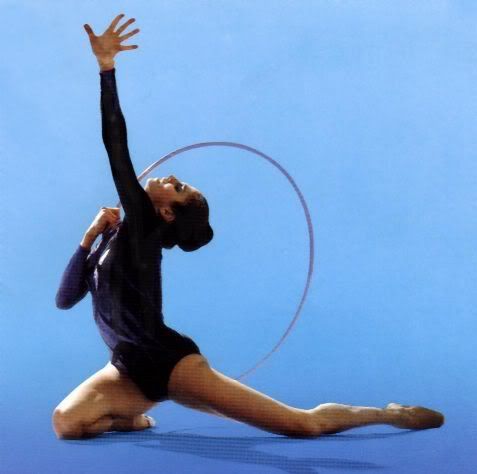
Rhythmic gymnastics grew out of the ideas of I.G. Noverre (1722–1810), Francois Delsart (1811–1871), and R. Bode (1881), who all believed in movement expression, where one used dance to express oneself and exercise various body parts. Peter Henry Ling further developed this idea in his 19th-century Swedish system of free exercise, which promoted "aesthetic gymnastics", in which students expressed their feelings and emotions through bodily movement. This idea was extended by Catherine E. Beecher, who founded the Western Female Institute in Ohio, United States, in 1837 . In Beecher's gymnastics program, called grace without dancing, the young women exercised to music, moving from simple calisthenics to more strenuous activities. During the 1880s, Emil Dalcroze of Switzerland developed eurhythmics, a form of physical training for musicians and dancers. George Demeny of France created exercises to music that were designed to promote grace of movement, muscular flexibility, and good posture. All of these styles were combined around 1900 into the Swedish school of rhythmic gymnastics, which would later add dance elements from Finland. Around this time, Ernest Idla of Estonia established a degree of difficulty for each movement. In 1929, Henrich Medau founded The Medau School in Berlin to train gymnasts in "modern gymnastics", and to develop the use of the apparatus.
Rhythmic gymnastics as a sport began in the 1940s in the Soviet Union. It was there that for the first time, the spirit of sports was combined with the sensuous art of classical ballet. (To Isadora Duncan, we credit the famous rebellion against the dogma of classical ballet and the shift toward the creation of a new discipline that would blend art and sport.)
The FIG recognized this discipline in 1961, first as modern gymnastics, then as rhythmic sportive gymnastics, and finally as rhythmic gymnastics. The first World Championships for individual gymnasts took place in 1963 in Budapest, Hungary. Groups were introduced at the same level in 1967 in Copenhagen, Denmark. Rhythmic gymnastics was added to the 1984 Summer Olympics in Los Angeles, with an Individual All Around competition. However, many federations from the Eastern European countries were forced to boycott. The Canadian Lori Fung was the first rhythmic gymnast to earn an Olympic gold medal. The Group competition was added to the 1996 Summer Olympics in Atlanta, Georgia.

No comments:
Post a Comment